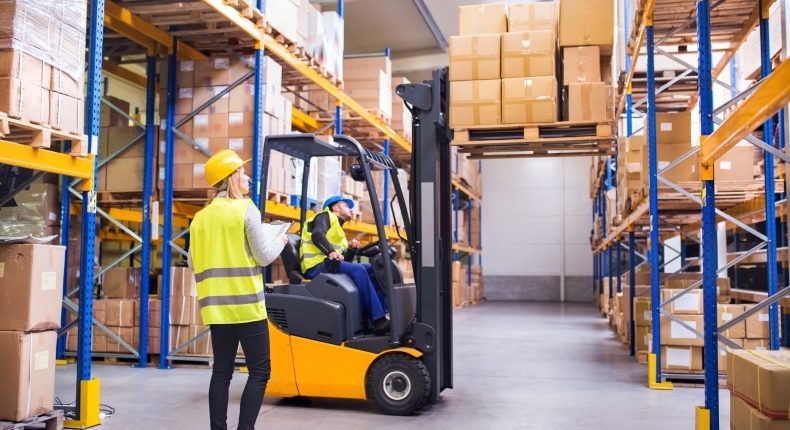Information
Legal information
Funded by


Reverse logistics has become an indispensable component for companies dedicated to textile logistics. This process not only contributes to environmental sustainability but also can have a significant impact on operational performance and customer satisfaction. Below, we will analyze in detail what reverse logistics entails, its usefulness, associated strategies, factors influencing its implementation, and the different types that exist.
Índice de contenidos
ToggleReverse logistics refers to the flow of products from the consumer back to the manufacturer, as opposed to the traditional movement of the supply chain.
Instead of moving from the supplier to the customer, reverse logistics addresses the return of goods from the point of consumption to the beginning of the supply chain. This process involves managing returned products, excess inventory, recycling, and proper disposal of products.
It is common to wonder what the function of reverse logistics is. Therefore, reverse logistics serves multiple purposes within the supply chain.
Firstly, it allows companies to effectively manage returned products, minimizing losses and improving customer satisfaction.
Additionally, it contributes to waste reduction and promotes sustainable business practices. Reverse logistics also enables the recovery of products for refurbishment, recycling, or reintroduction into the market, maximizing the value of resources.
Reverse logistics strategies vary depending on the nature of the products and the specific needs of the company.
Some of the most common strategies include:
The proper implementation of these strategies requires careful supply chain management and close collaboration with suppliers and logistics partners.
Regarding reverse logistics, it is not just about understanding its concept or applying specific strategies; its effectiveness lies in how the main factors shaping this reverse process in the textile supply chain are managed. From transparency in return policies to advanced technology and close collaboration with suppliers, every detail contributes to perfecting this process. Therefore, let’s look at some factors that play a role in adequate return logistics.
Clarity in return policies is a crucial factor. Customers should easily understand the procedures and requirements for returning products. Transparency in communication about return terms contributes to customer satisfaction and facilitates smooth management.
The incorporation of advanced technologies, such as real-time tracking systems and logistics management software, should be considered. These tools allow the monitoring of returned products, tracking their location, and constantly updating information, improving visibility throughout the reverse supply chain.
Reverse logistics is not an isolated process; it requires effective collaboration with suppliers and logistics partners. Coordination and seamless communication among all involved parties are essential to improving product flow and minimizing downtime.
The ability to quickly assess the condition of returned products involves not only identifying possible defects or damages but also determining the feasibility of refurbishing, recycling, or discarding an item.
Return logistics is not static; it is subject to changes in market demands and consumer trends. Companies must be able to agilely adapt to these variations, adjusting their reverse logistics strategies and processes to meet the changing needs of customers and the business environment.
In an increasingly sustainability-oriented world, the ability to recover and recycle materials is a prime factor. Well-executed reverse logistics should incorporate processes that allow extracting the maximum value from returned products, whether through reuse, component recycling, or raw material recovery.
In the field of reverse logistics, the variety of challenges faced and opportunities presented has led to diverse classifications that address different aspects and needs within this supply chain in the textile logistics sector. Each type of reverse logistics has its characteristics, and understanding these distinctions is important for implementing effective strategies.
This type focuses on managing products returned by customers after purchase. It involves the collection, sorting, and processing of items that consumers decide to return for various reasons, such as dissatisfaction, defects, or changes in preferences. The goal of post-consumer reverse logistics is to maximize the value of returned products through strategies such as resale, refurbishment, or recycling.
Pre-harvest reverse logistics is applied before products reach the end consumer. It focuses on managing surplus products before they are marketed. This may include adjustments in production to avoid excess inventory, proper redistribution of unsold products, or implementation of strategies to reduce waste in the production phase.
Focused on products requiring repair, after-sales reverse logistics manages the return of items for repair, refurbishment, or replacement. It is essential to increase product durability and improve customer satisfaction, demonstrating the company’s commitment to quality and after-sales service.
Sustainability occupies a prominent place in recycling reverse logistics. This type focuses on recovering materials for reuse in the production chain or for manufacturing new products. Recycling reverse logistics seeks to reduce environmental footprint by promoting circular economy and minimizing resource waste.
In many cases, products come with packaging and packaging materials that can generate waste. Return logistics for packaging and packaging material focuses on the collection and effective management of these elements, whether for reuse, recycling, or proper disposal. This contributes to waste reduction and alignment with sustainable practices.
This type of reverse logistics deals with products that have become obsolete or are out of season. It involves the strategic management of these items, considering options such as liquidation, relocation to secondary markets, or donation to avoid obsolescence and increase residual value.
In conclusion, reverse logistics is fundamental if the goal is to achieve sustainable supply chain management regarding textile logistics. Its positive impact is reflected not only in improved productivity and customer compliance but also in contributing to environmental preservation. The proper implementation of reverse logistics services requires a complete understanding of its principles, the adoption of flexible strategies, and the integration of advanced technologies in logistics management.
Information
Legal information
Funded by


